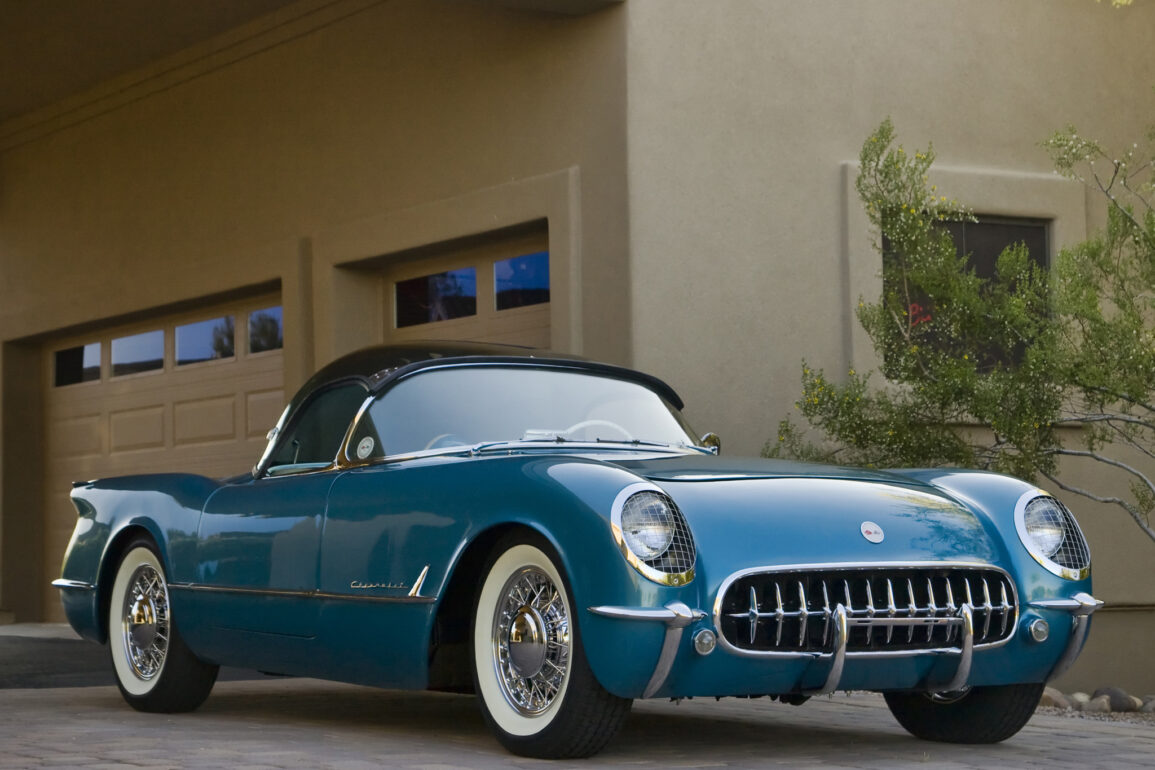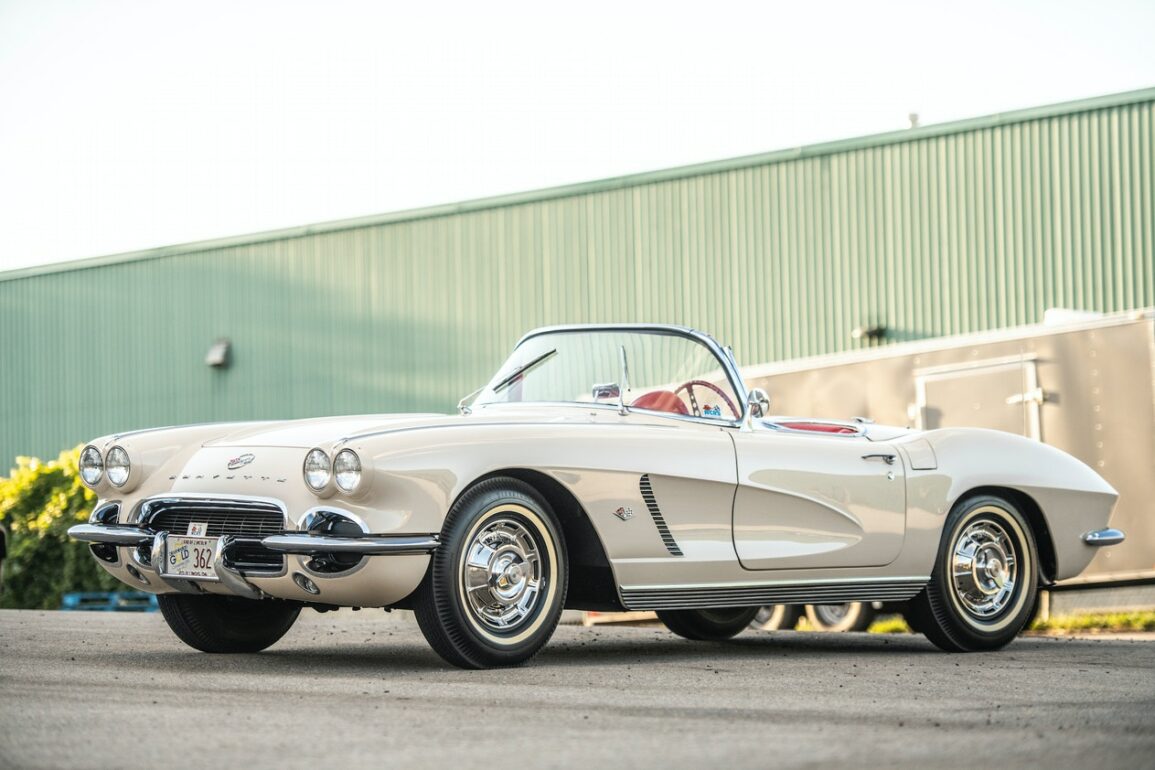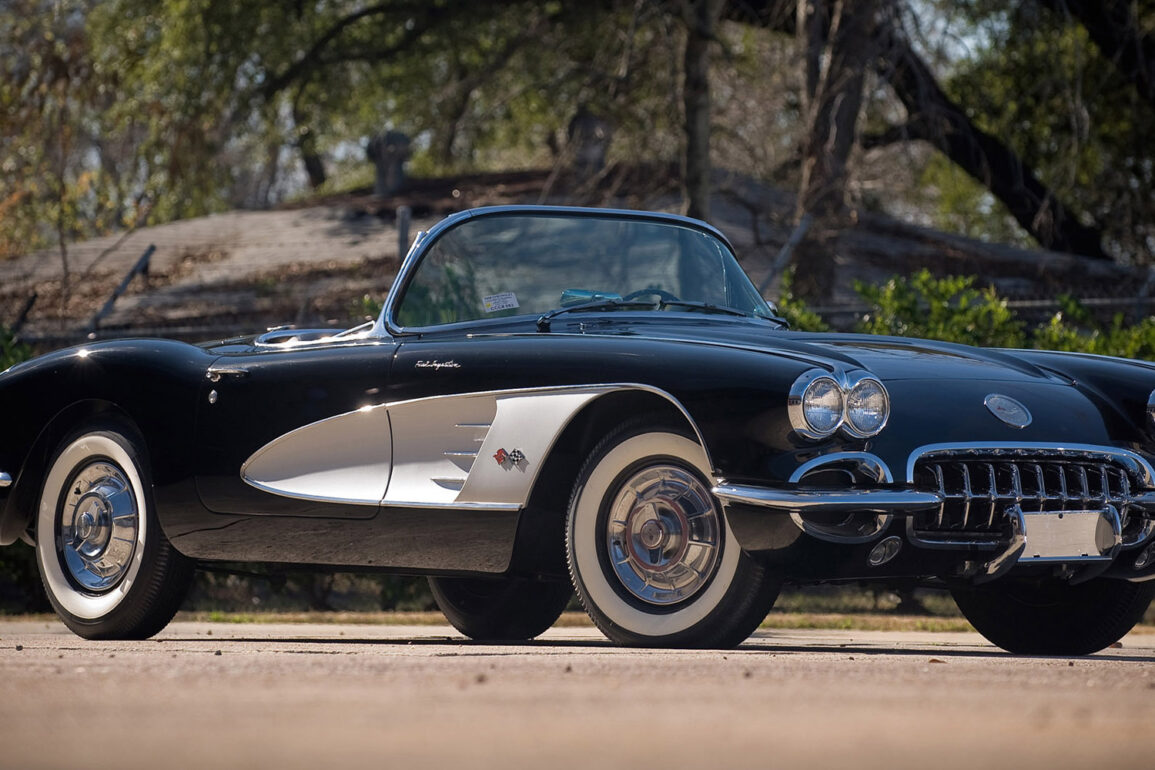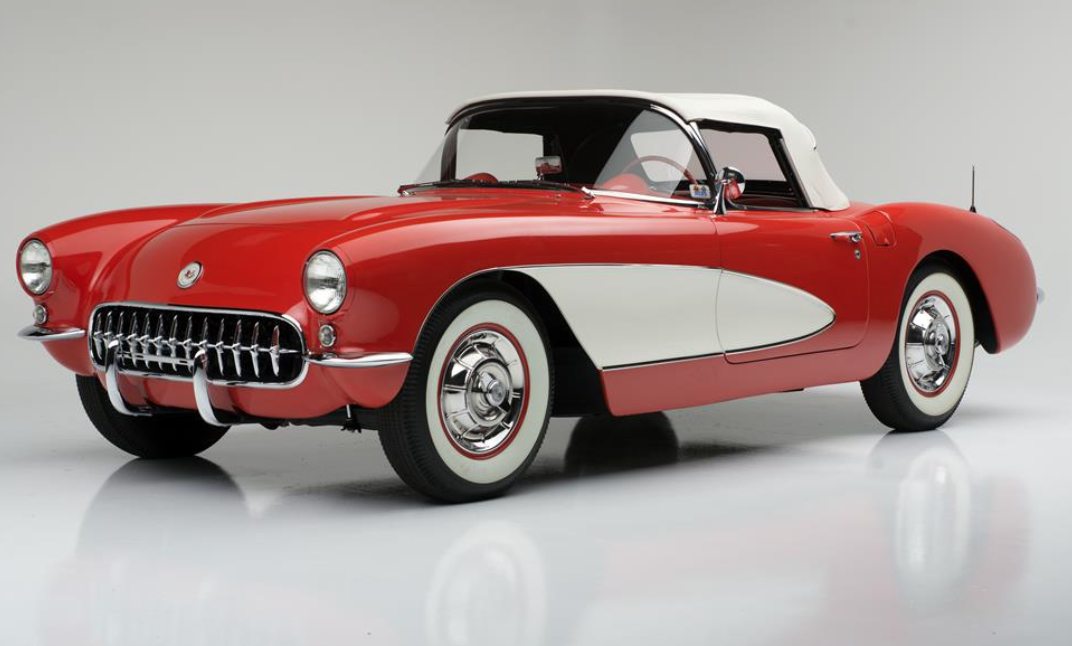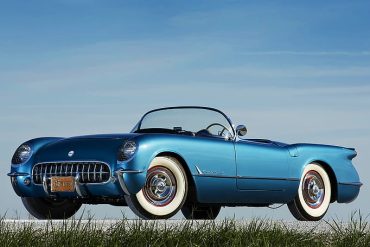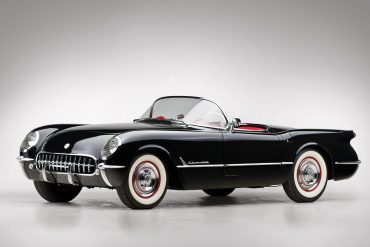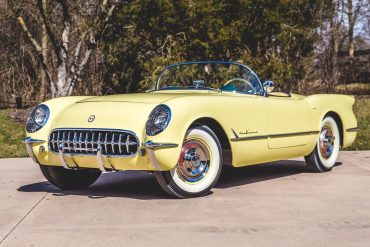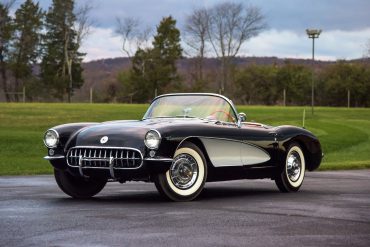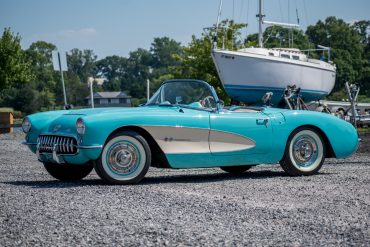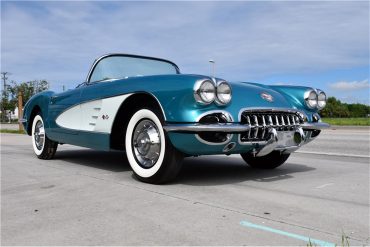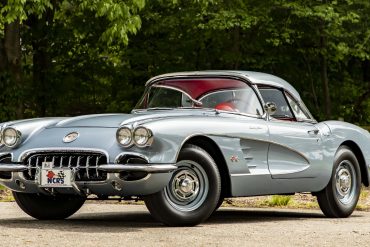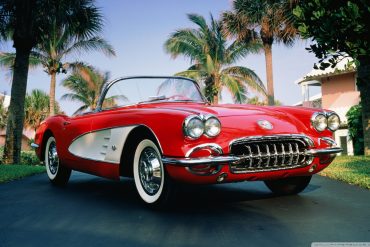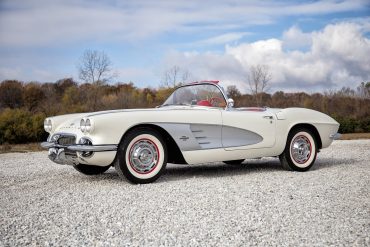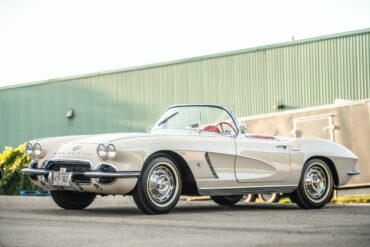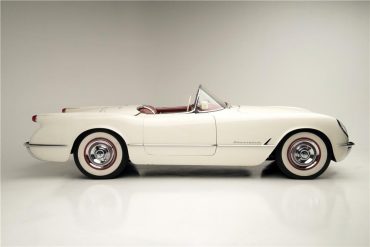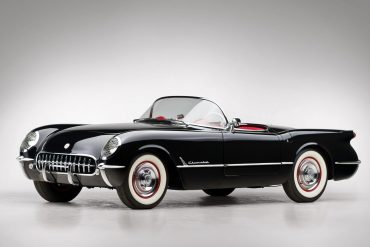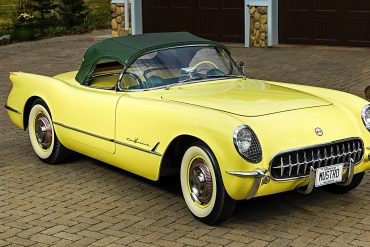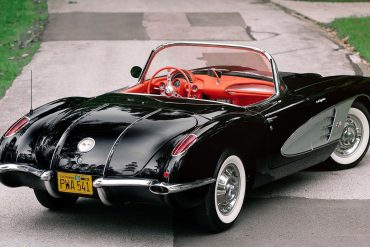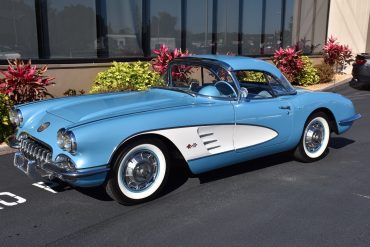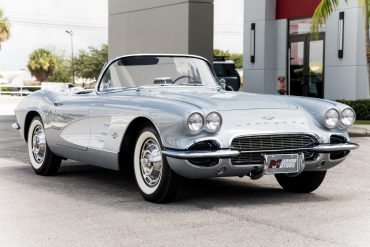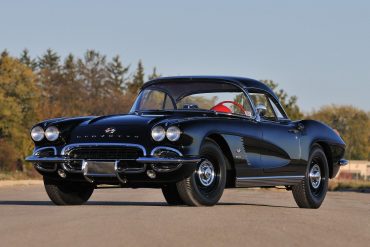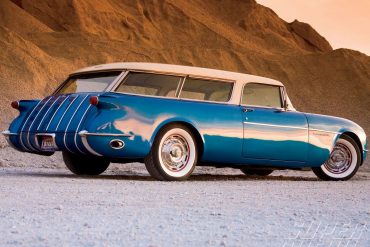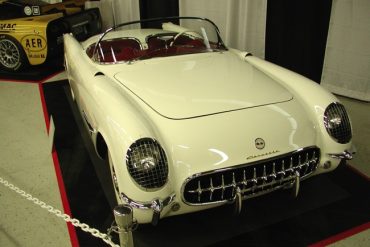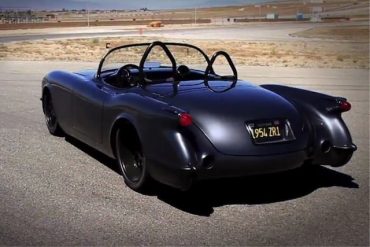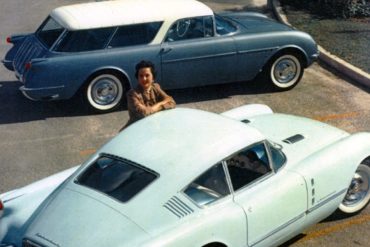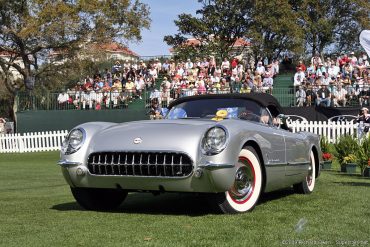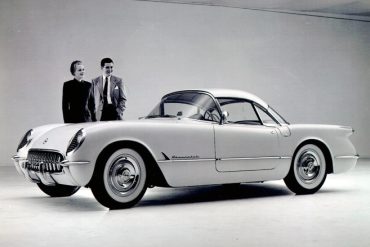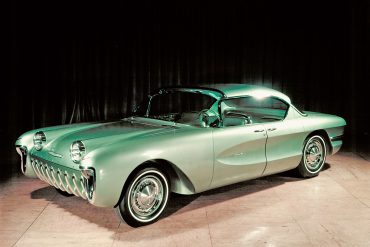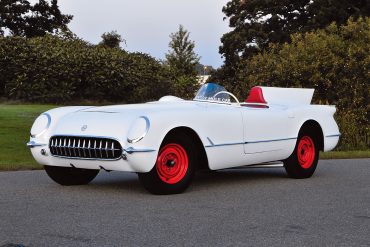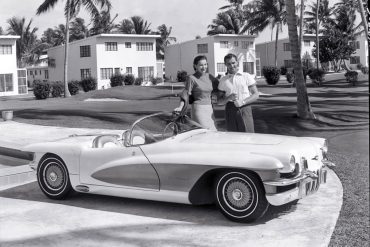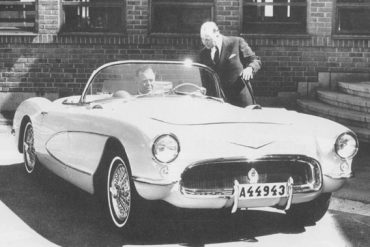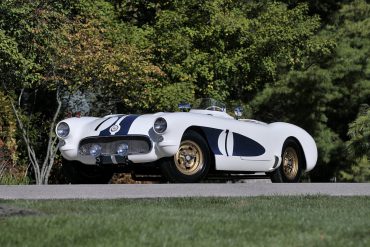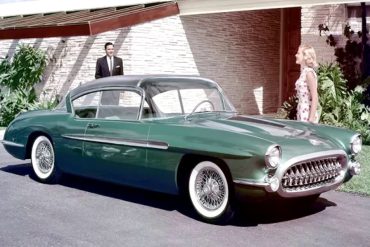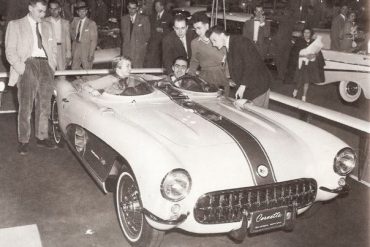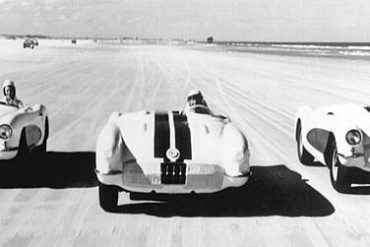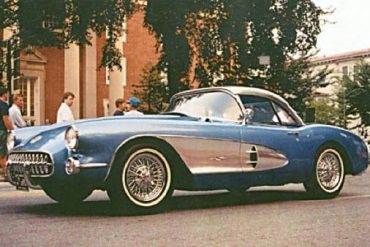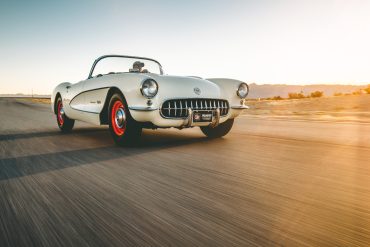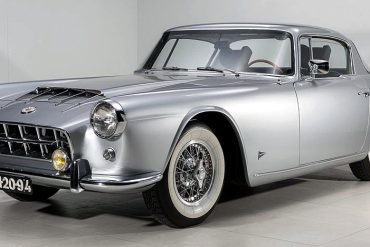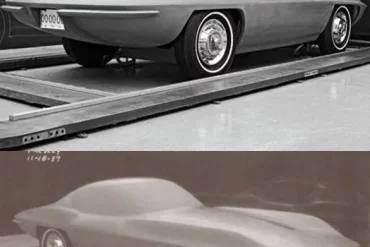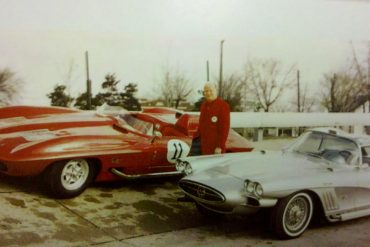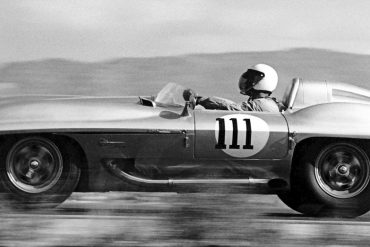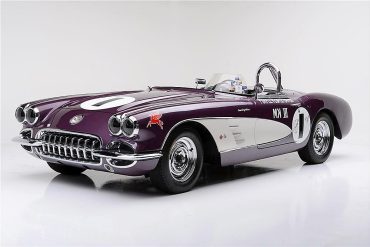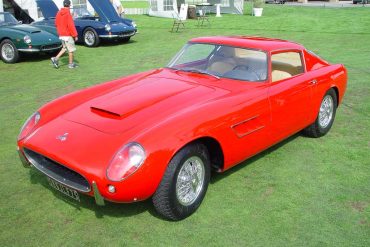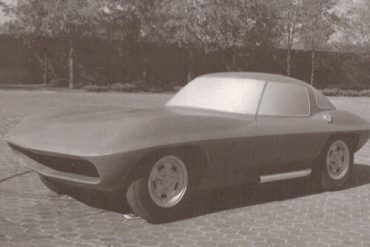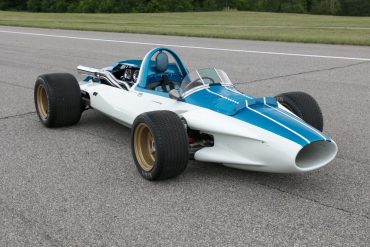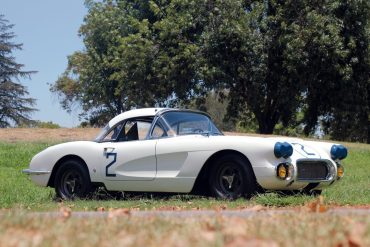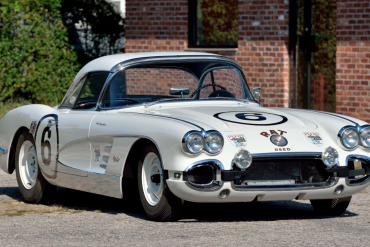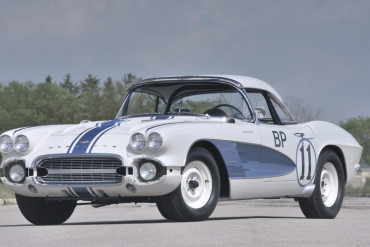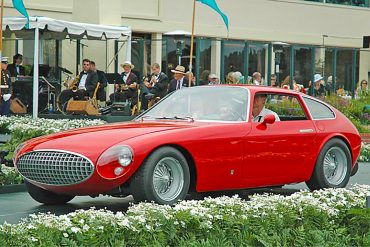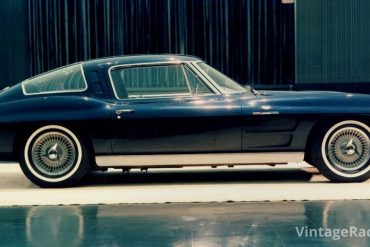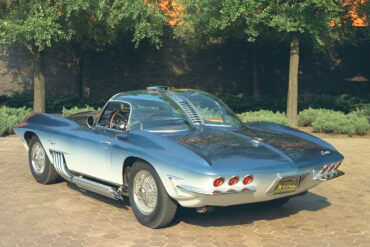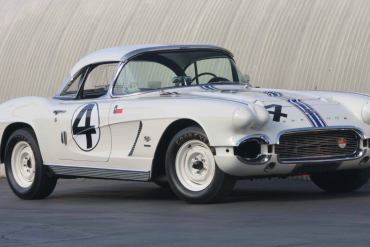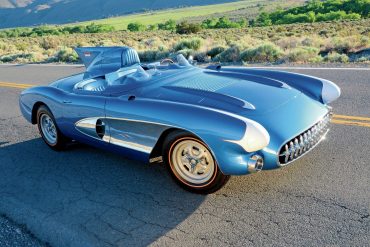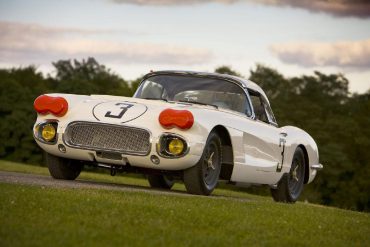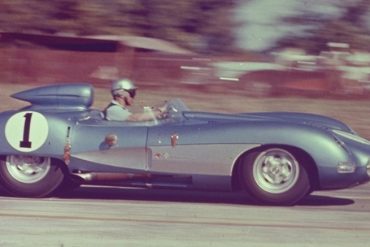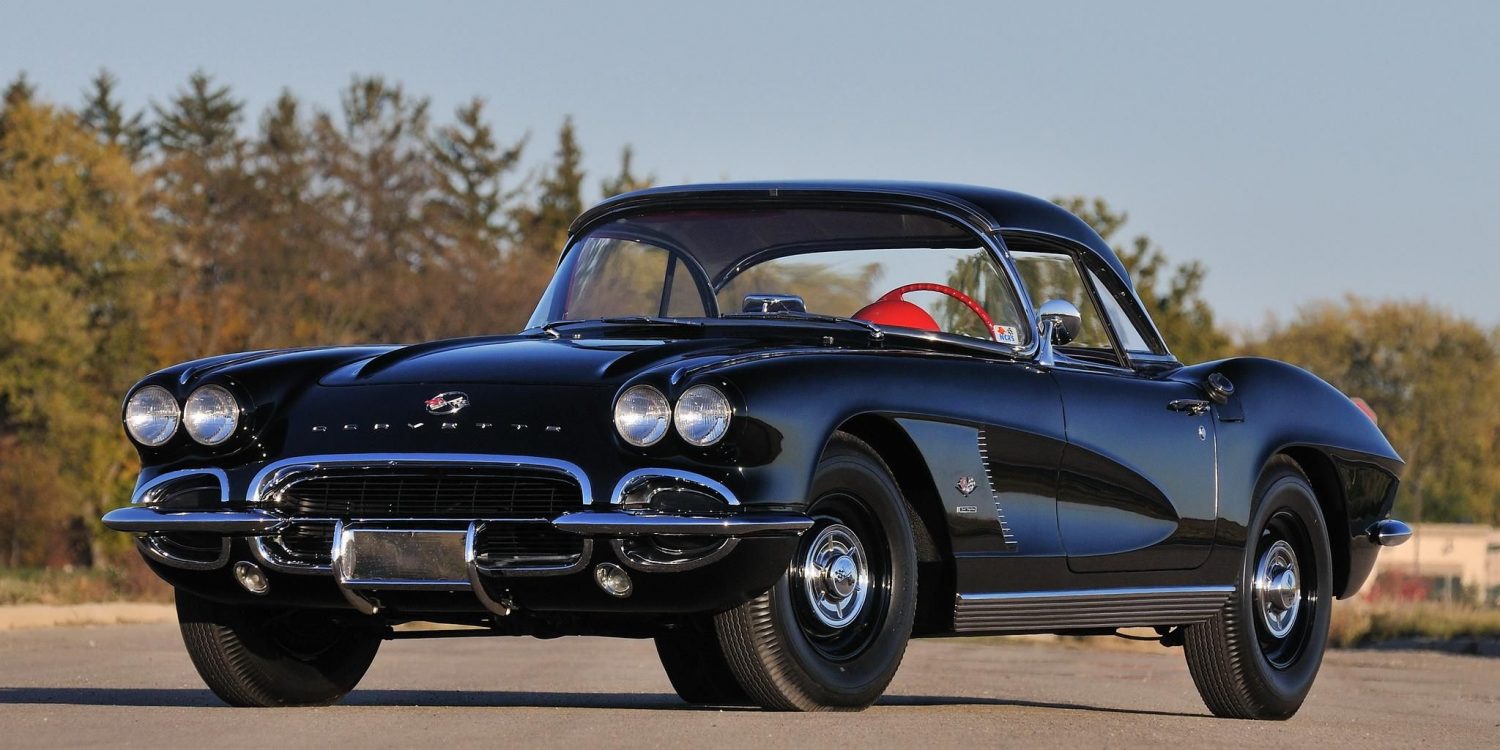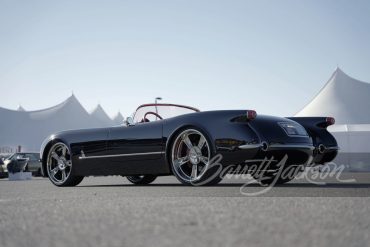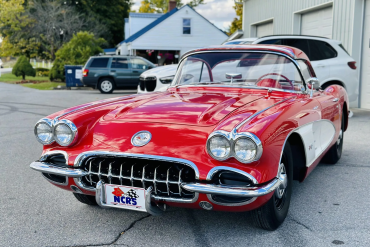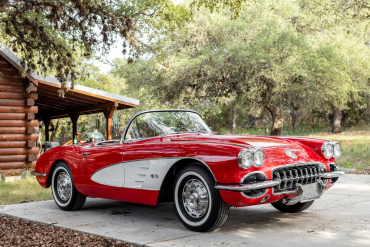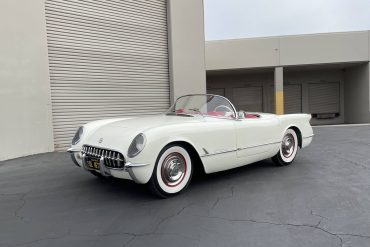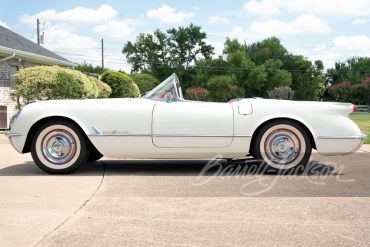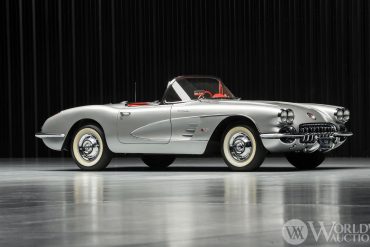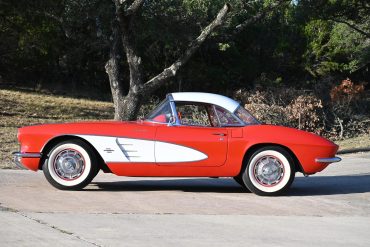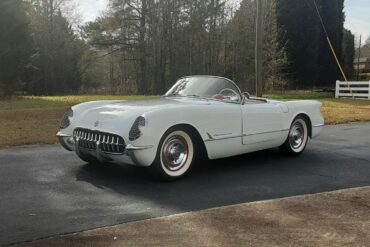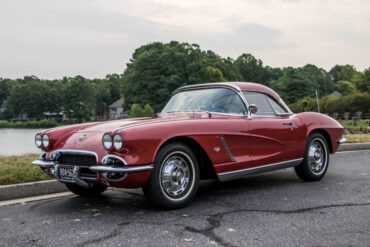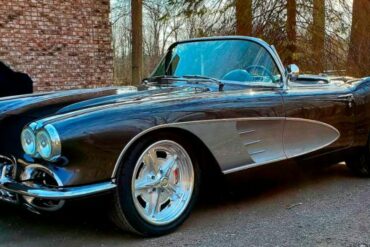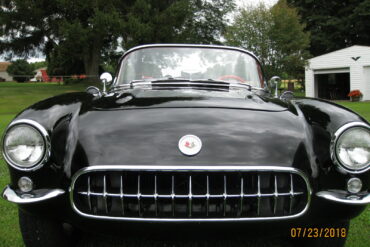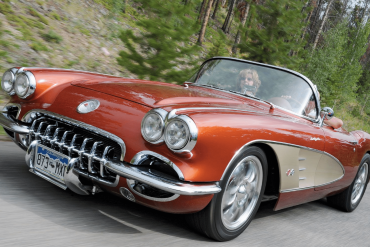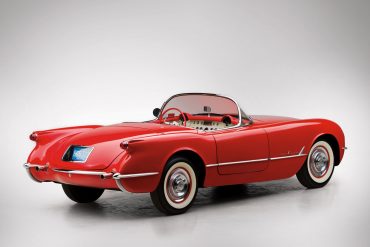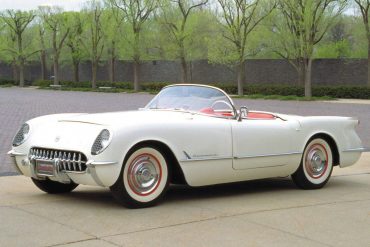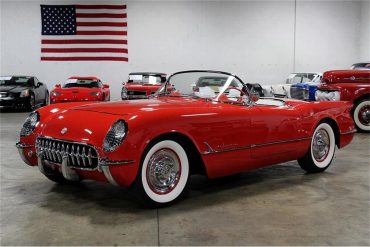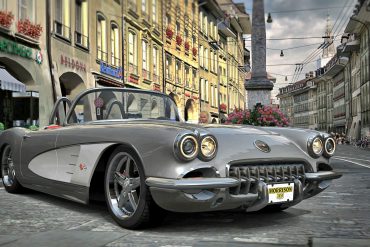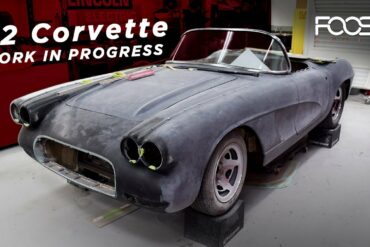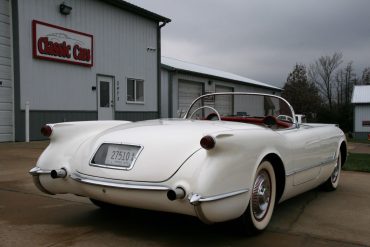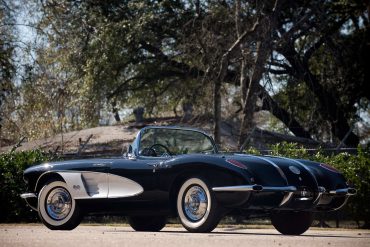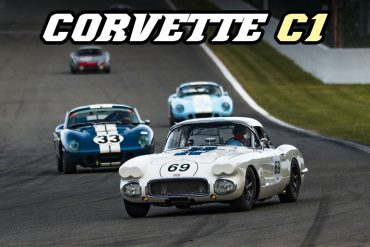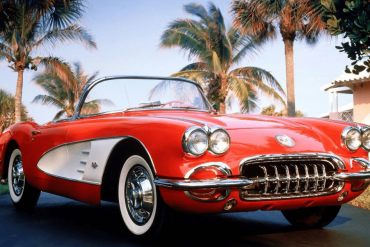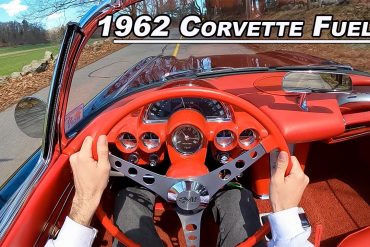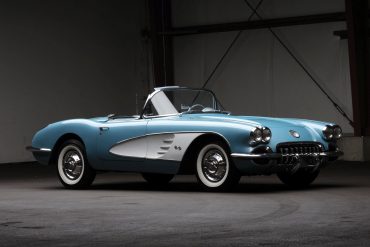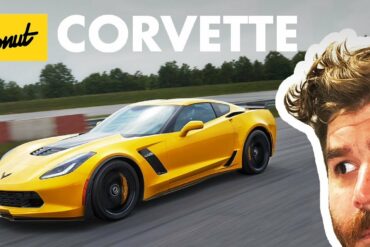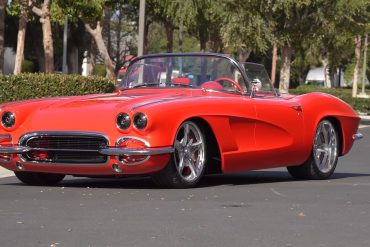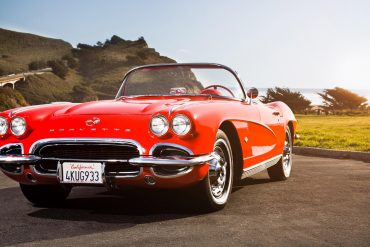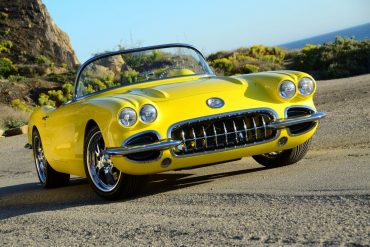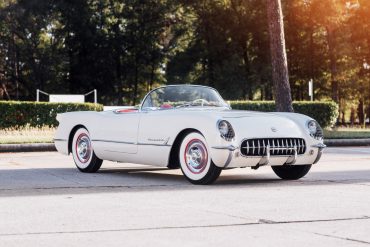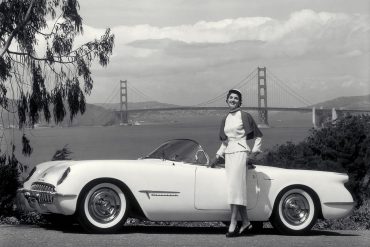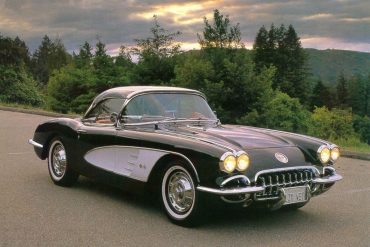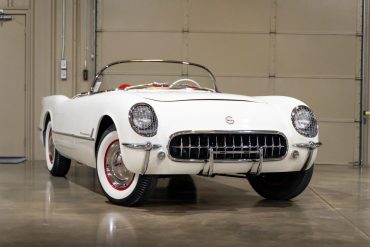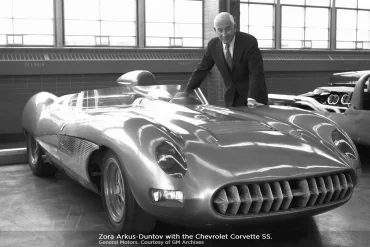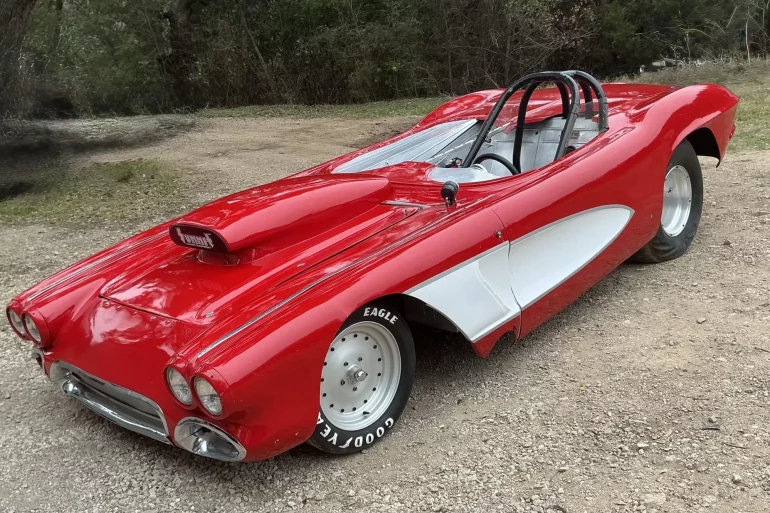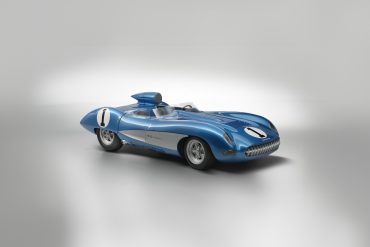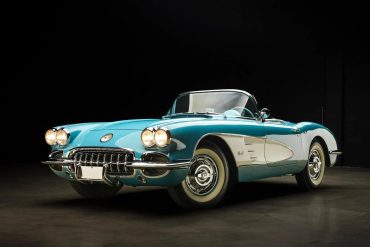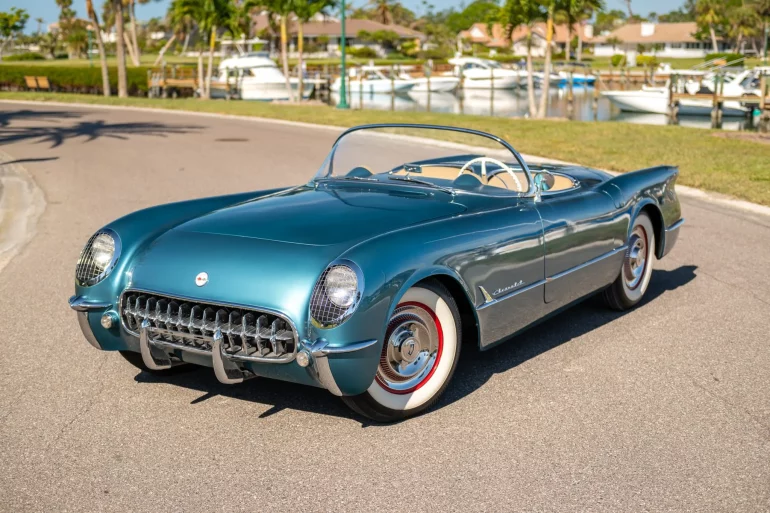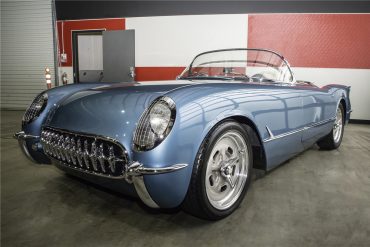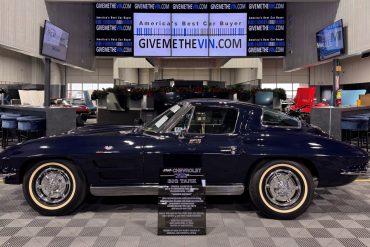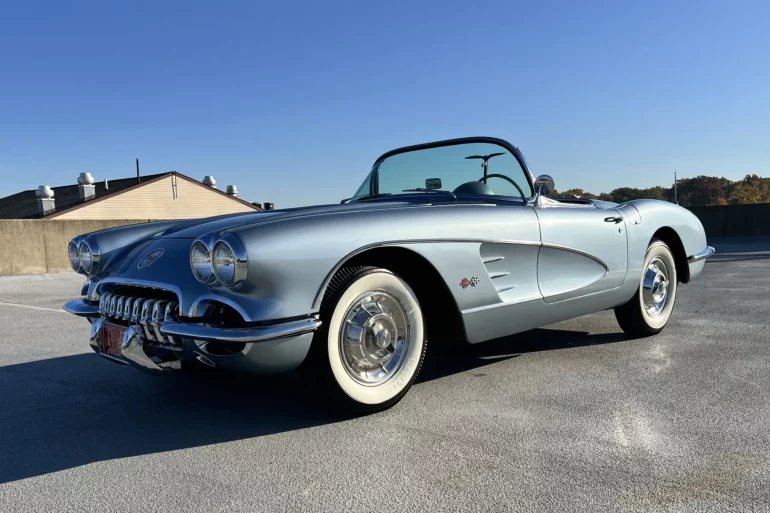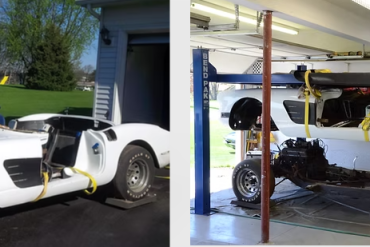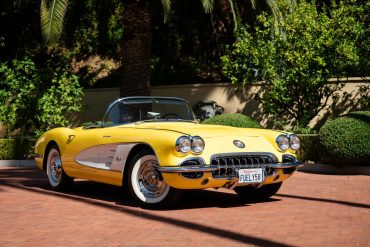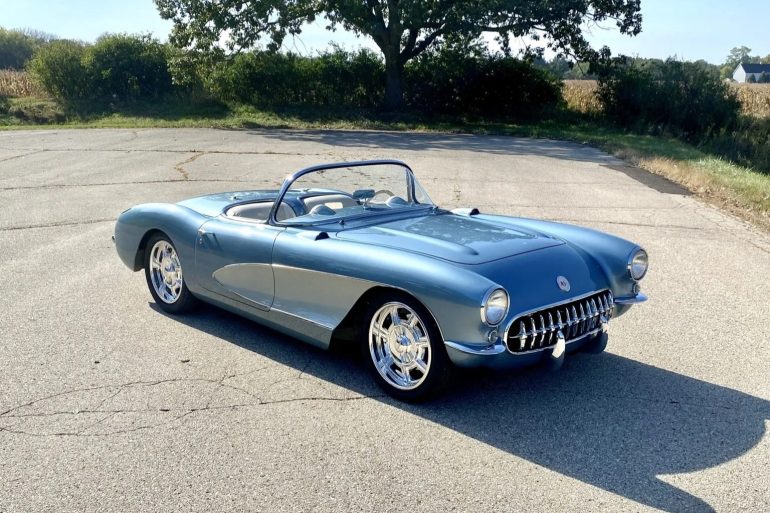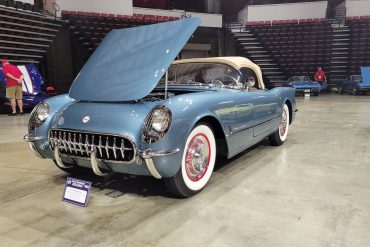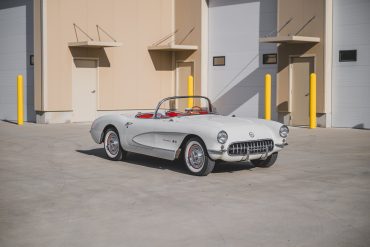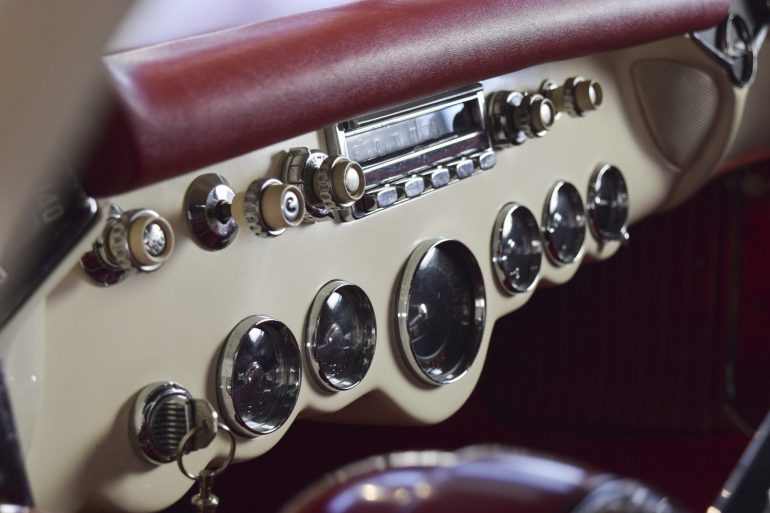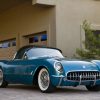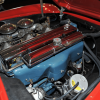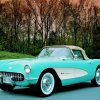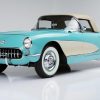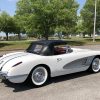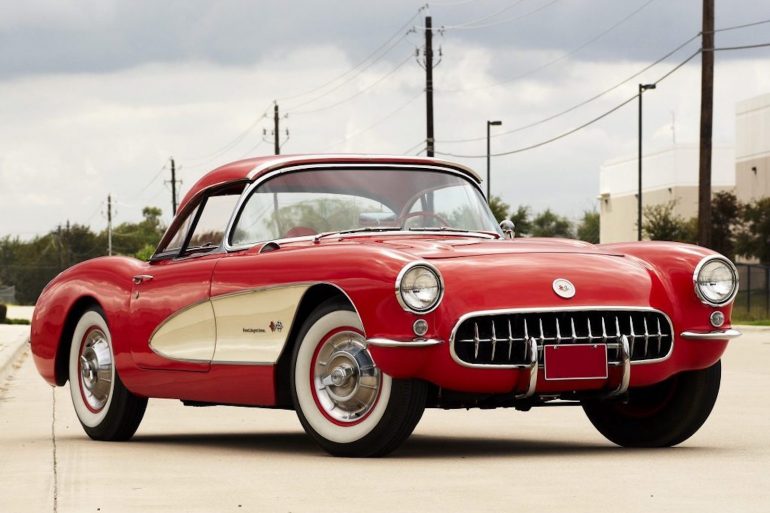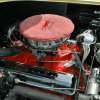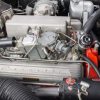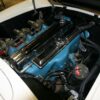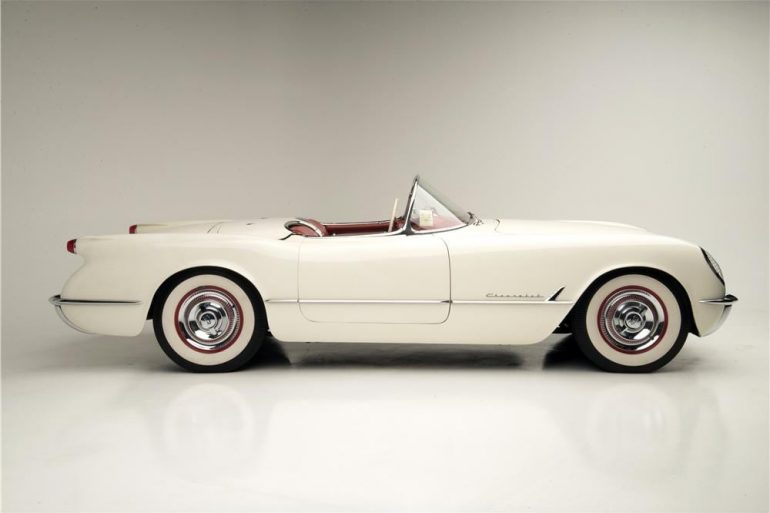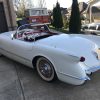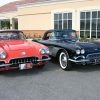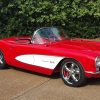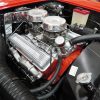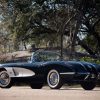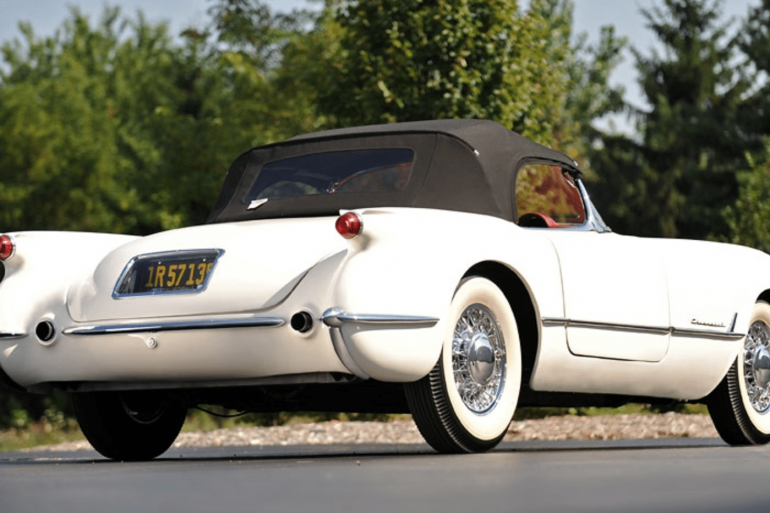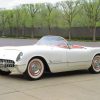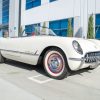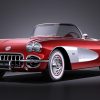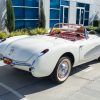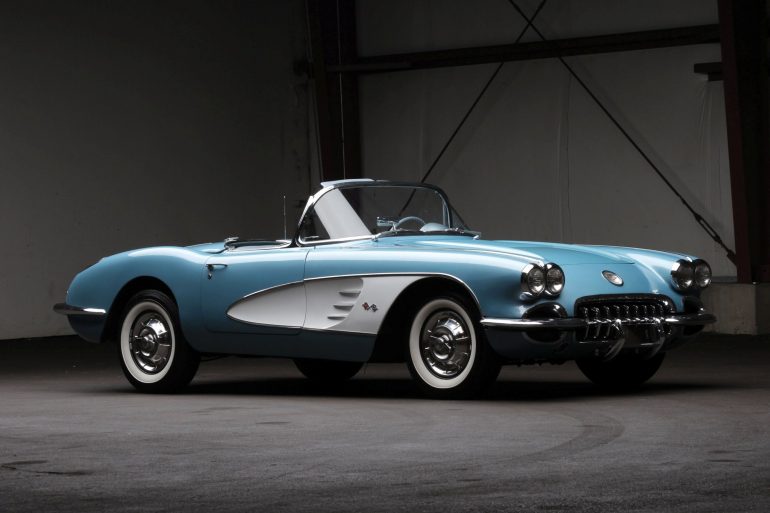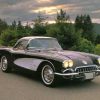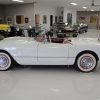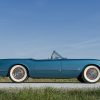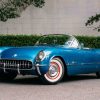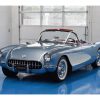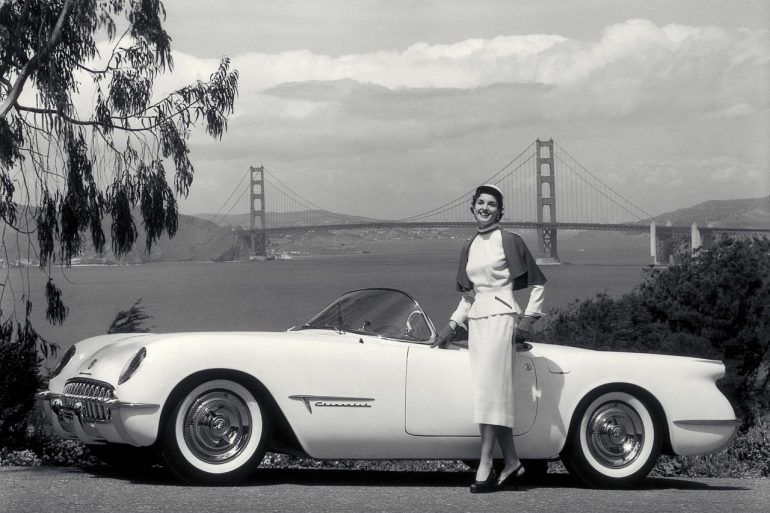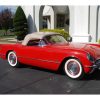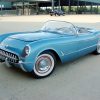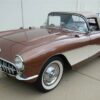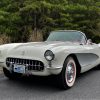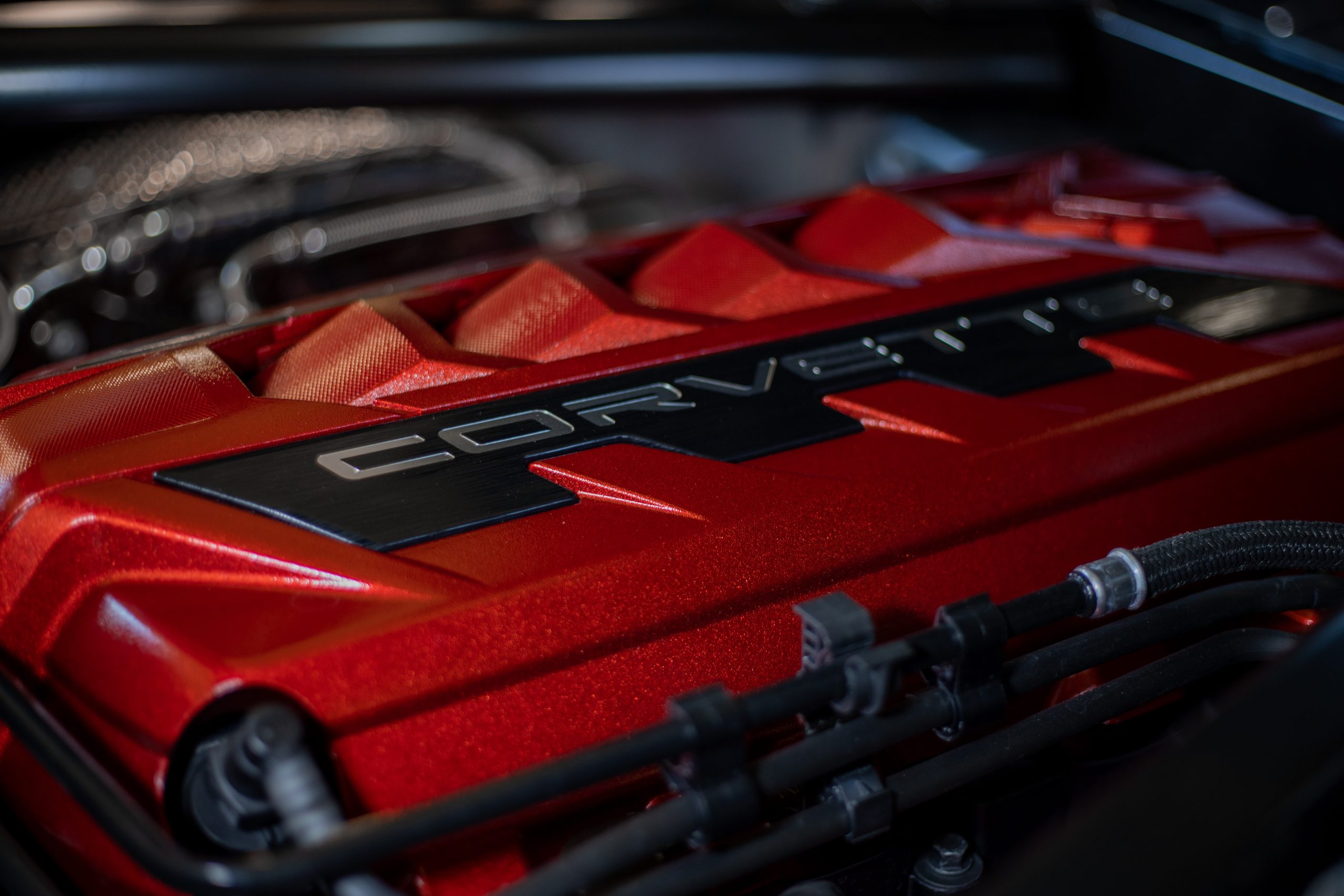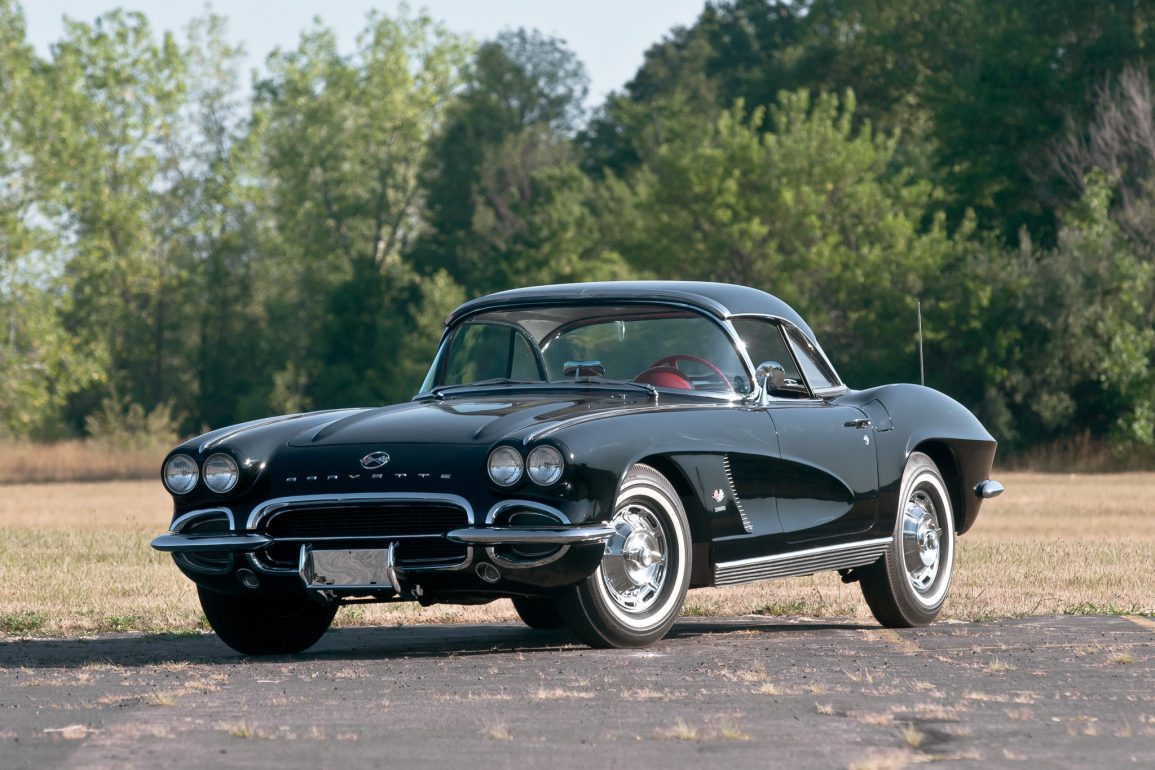
C1 Corvette - “Birth Of A Legend”
Research & Complete Reference Guide
Basics / The Story / Timeline / MY Research / MY Guides / Buyer's Guide / The Market / Vids & Pics / Latest / Tech Research
Where It All Began
As we near the end of the second decade of the 21st century, there is no question that the Chevy Corvette has become one of the most recognized, most celebrated and most powerful production cars in the world. With the latest pinnacle of Corvette-dom – the C8 Corvette Z06 – wearing the current crown of the best Corvette ever made.
However, this current “King of the Hill” ascended to its throne in exactly the same way that earlier generations of Corvettes ascended to similar precipices before it. They got there by taking what had been learned in the development of earlier-generation Corvettes, by carrying forward the bits of the car that made it great, and by discarding the rest in favor of building a newer, stronger, FASTER version of that earlier iteration of the American sports car.
In many ways then, the Corvette is very much like the proverbial “phoenix” from Ancient Greek mythology. Each new iteration of the Corvette is “a beautiful bird born from the ashes of its former self.” Is this a fair analogy? From our perspective, we would say most definitely YES!
Consider that each Corvette, in its own time, was the “dream car” that captured the imaginations of an entire generation of men and women. However, it was an ever-changing dream that reflected the era in which it was being dreamed. Also consider this: the anticipation of the arrival of each “next-generation Corvette” is almost always accompanied by a dramatic decline in unit sales of the current model. For those that could afford it, it also meant that the current “dream car” lost enough of its allure that it was time to trade-up to the next model.
But in all of this, even as Corvette continued to evolve beyond the C7 Corvette into something completely new and different, a mid-engined masterpiece, it is important to remember that the crowning achievements of the C8 evolved from the success of the C7, which in turn was an evolution of the C6, and so on until we get back to where it all began; the 1953 Chevy Corvette.
When considering the history of the brand, it is fascinating to look at the “origin story” of Corvette and recognize just how much the first-generation (C1) model evolved in a period of just ten years.
For the purposes of this discussion, the C1 Corvette can effectively be divided into four sub-eras (based mostly on the outward physical build of its body): the 1953–1955 Corvette, the 1956–1957 Corvette, the 1958–1960 Corvette and the 1961–1962 Corvette.
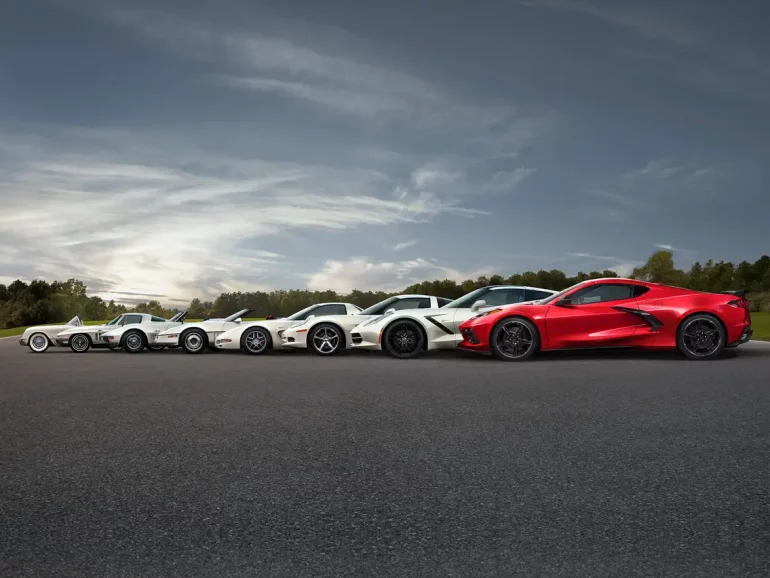 All eight-generations of the Chevy Corvette.
All eight-generations of the Chevy Corvette.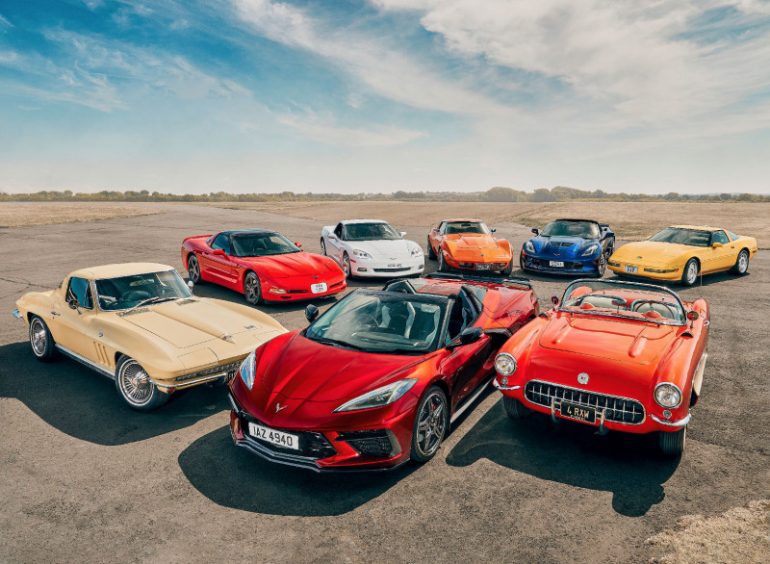 All the Corvette Generations. Image Credit: drives.today
All the Corvette Generations. Image Credit: drives.todayThe C1 Corvette Story & Details
The need to design and develop an American made sports car really began at the end of World War II. American servicemen, still stationed overseas in England, were able to sample the joys of driving in the MG Sportscar. Developed in 1923, Morris Grate’s compact TC was crude, cramped, and powered by a tiny 1250cc engine – yet it produced quite a stir – and was a lot of fun for guys to drive and for the girls to be driven in.
Because of the popularity of the MG, other British sports cars soon followed and began finding their away across the pond to the United States, including the Jaguar XK 120, the Triumph TR, and the Austin Healey. It seemed that the British automotive market had found a marketing niche that no American car companies could match – that is, until Harley Earl decided to take on the challenge of designing an all-new sports car.
Harley J. Earl, founder and head of General Motor’s Art and Colour Section, the American auto industry’s first in-house styling department, virtually invented the “dream car” with his renowned Buick Y-Job concept, first displayed in 1938. Throughout much of the late 1930’s and 1940’s, Earl continued to invent and re-invent the conceptual dream car – opulent machines that were an extravaganza of chrome, fins, and curving lines that became immediately recognizable as some of the finest showpieces in the industry.
In early 1951, Earl designed the amazing Buick Le Sabre, a car which incorporated styling details of the Lockheed P-38 Lightning, and a car that was an outward reflection of Earl’s love for dramatic lines and styling details. Earl’s work proceeded under the codename “Project Opel.” Because of the very real concerns surrounding a potential breach in security, the site where Earl’s team worked feverishly on this car was restricted to just a chosen few.
It was at this phase of the project that Edward N. Cole, a brilliant engineer who had transferred from General Motor’s Cadillac Division to Chevrolet, took over the role of chief engineer on this project. In addition to Cole’s assignment to the project, Earl also sought out Robert F. McLean, a young sports-car enthusiast with degrees from Cal Tech in both engineering and industrial design.
McLean was given the challenging of more fully conceptualizing Earl’s preliminary designs by coming up with the basic mechanical layout for “Project Opel.” McLean decided early on to ignore convention and conceptualized the car from the back forward, starting at the rear axle as a reference point. He designed each component – from the back axle, the passenger compartment, the front bulkhead, and the front axle – as close to the ground as possible in order to achieve the low lined, ground-hugging profile that Earl had desired. The driver and passenger would sit pretty much on the floor and the car would have a roofline of only 47 inches – which was very low in that era of automotive manufacturing. Further, his goal was to develop a car that had a balanced 50/50 weight distribution which was most desirable for superior sports-car handling. Other criteria that were a requirement for a sports car included a cruising speed of over 70 miles per hour, a weight-to-power ratio of better than 25 to 1,“ample brakes, and good handling qualities”.
Earl turned to fiberglass for the basis of his car’s exterior, although early models/concepts called for the then conventional steel body. While fiberglass would offer his team of designers greater flexibility to create and mold the very complex shapes and curves that Earl loved, it also posed some real concerns – would fiberglass provide adequate structural strength and would it work in mass production? The first of these questions was “answered” quite unintentionally. Chevy had built a full size convertible (of which Edward Cole had been a member of the design team) with a fiberglass body. This car, designed and fabricated strictly for investigative research and development purposes in early 1952, was slated to be studied during high speed testing at GM‘s Milford proving grounds.
During one of his runs, the driver accidentally rolled the car but managed to escape without injury. Similarly, and quite astonishingly, the car’s body suffered no major damage. This single event convinced Earl that fiberglass would form the shell of his dream car.
Earl began aiming to have this new concept car ready for the 1953 Motorama, which was to be held in January at New York’s Waldorm-Astoria Hotel. In the postwar prosperity of 1949 America, General Motors had introduced its first Motorama to the American public, an all-out extravaganza that turned the marketing of new cars and designs into a cultural event of national proportions. Having already had great success at the 1952 Motorama with his Le Sabre, Earl recognized that the response of the public to his new concept car might serve as the catalyst to move it beyond merely concept and into production. With a deadline now driving them, McLean and the team of Chevrolet engineers continued to work incessantly to find production chassis and drivetrain components that would be compatible with the developing fiberglass body.
The need to use off-the-shelf hardware was crucial as the Motorama was rapidly approaching. Ultimately, the chassis had to be completely redesigned to make the car more rigid. Also, McLean wanted to position the engine behind the front axle instead of over it. In addition, an open or Hotchkiss drive was used in place of the traditional torque-tube drive – a first in Chevrolet history. Other firsts included the use of conventional leaf springs located on the rear axle but positioned outboard of the main frame rails for added stability, higher shock rates in the front suspension with larger diameter anti-roll bars, a quickened 16:1 steering ratio, redesigned steering arms and a steering wheel that measured an inch smaller than on production Chevys.
Earl was tasked with finding an engine that was worthy of a true sports car. Although his efforts were nearly fruitless, the engine that was selected for Earl’s new concept car was the tried-and-true 235.5 Cubic Inch Overhead Valve Six cylinder engine. This engine, known within the industry as the “Stovebolt Six” produced a mere 115 horsepower (without modification). Of course, like the rest of the car, the engine received a complete facelift, receiving a high lift, long duration camshaft, solid valve lifters, dual valve springs and cast-iron pistons for increased durability. The head castings were modified to produce an increased compression from 7.5:1 to 8.0:1. Water pump flow capacity was increased and the pump itself was relocated to allow for a larger, four-blade fan to be installed that would still clear the low hood line.
Triple Carter “YH” sidedraft carburetors were installed, each feeding a pair of cylinders through a separate choke. In all, the various changes resulted in a modified 235.5 C.I. engine that was capable of producing 150 Brake Horse Power at 4500 rpm, although the engine itself was capable of revving quite a bit higher than that. This engine would come to be known as the “Blue Flame 150.” Still, resolving the engine dilemma was only part of the equation.
In the concept car that was about to show at Motorama, a controversial decision was made to use a two speed automatic transmission (instead of a manual transmission (which was already considered by most to be the norm for sports cars.)) GM engineers insisted that the decision was made because none believed that GM had a manual gearbox that was strong enough for the fortified engine. Theoretically, the car would be capable of around 110 miles per hour top speed. As Edward Cole was the chief engineer for the Chevrolet Division of General Motors, he was one of the first to see Earl’s new fiberglass-bodied concept car. Enraptured by it’s appearance, he enthusiastically promised to support Earl in his efforts to win production approval of this new vehicle.
This support went all the way to the 14th floor executive suite of General Motors. There, Earl met with GM company president Harlow Curtice and Chevrolet Division general manager Thomas H. Keating. He took the pair of a walk around tour of a full scale model of the concept car and convinced both that this car was going to be profitable product because it could be produced cheaply using mostly stock Chevrolet mechanics, but it would be striking enough to draw people into the showrooms, even if the end result was that it helped increase the sales of other Chevrolet models by bolstering Chevrolet’s sedate family car image His persuasiveness worked.
The car was approved as part of the 1953 Motorama show. At the same time, it was decided that the engineering staff should work on the car with a view to eventual production and would proceed as Project EX-122, with the final go/no go decision to be based largely on showgoers reactions. In late 1952, the Motorama show only a couple month away, Chevrolet executives began the process of naming their newest dream car. Although nearly 300 proposed names were suggested, it was Myron Scott, Chevy’s assistant advertising manager, that suggested the name “Corvette”. Defined as “a type of small, agile, 19th century warship,” the name implied speed, strength and maneuverability and was a perfect representation of the powerful and agile sports car that so many had worked to design.
The concept Corvette was a runaway success at it’s 1953 Motorama debut, and the response it received was staggering. The car, finished in gleaming Polo White with a bright Sportsman Red interior and trimmed with chrome flourish, immediately generated such an incredible buzz, (with people asking “when will it be available at my local Chevy dealer?”), Chevrolet decided to start building production model Corvettes as soon as it was possible to do so.
Amazingly, it took GM less than 6 months to fabricate the necessary tooling and begin production of the first Corvettes and they were able to roll out the first cars later that same year as 1953 models. With the exception of a few, minor updates, the Motorama Concept Corvette went to production with it’s styling virtually unchanged. The car had a uniquely masculine, muscular, almost predatory look. In short, it was stunning. The fact that Earl’s original Corvette was unmolested by the recommendations of shareholders or corporate leaders within GM – something that was as unheard of then as it is today – is proof positive of the sheer genius behind Earl’s design.
Further, it has made owning an original 1953 Corvette all the more appealing to collectors and enthusiasts, as it is not only the first production Corvette ever, but an accurate reflection of the original conceptual design that Earl created and presented to GM (and the public) for consideration and approval.
In the days that followed the Motorama, the Chevrolet Corvette – the first true American sports car – was born.
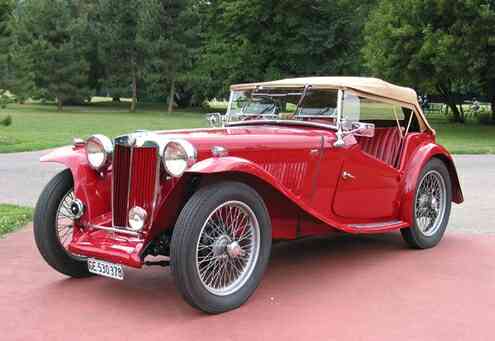 1946 Morris Grate’s “TC” Sports Car.
1946 Morris Grate’s “TC” Sports Car.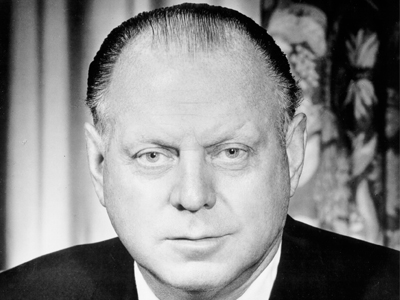 Father of Corvette – Harley J. Earl.
Father of Corvette – Harley J. Earl.
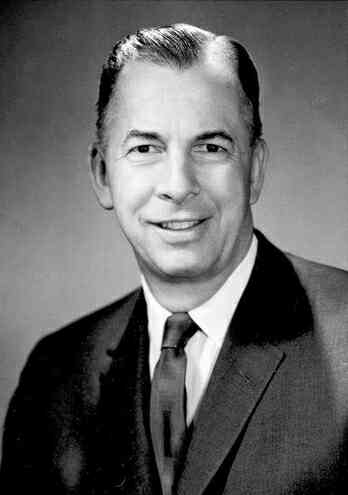 Edward N. Cole, Chief Engineer for GM’s Chevrolet Division.
Edward N. Cole, Chief Engineer for GM’s Chevrolet Division.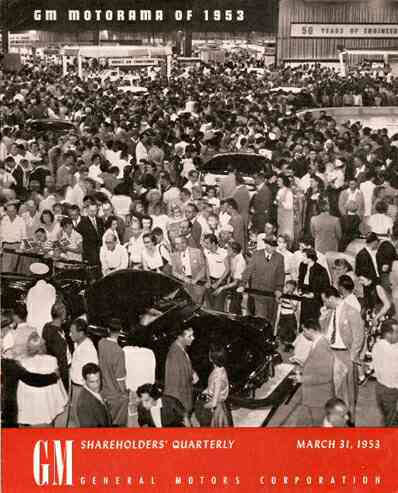 Promotional advertisement from “GM Folks” magazine introducing the 1953 Motorama.
Promotional advertisement from “GM Folks” magazine introducing the 1953 Motorama.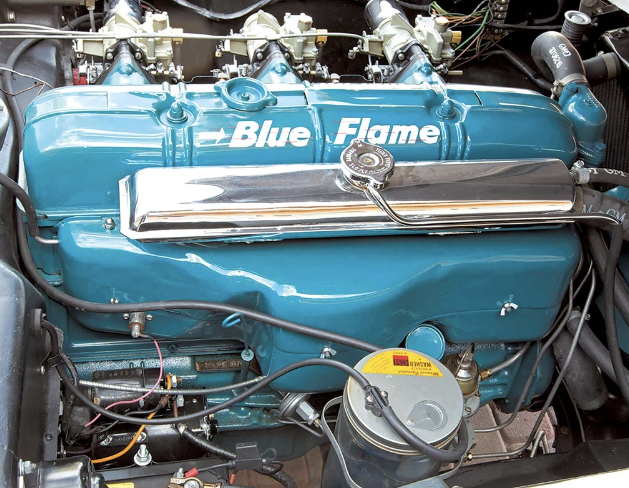 The “Blue Flame 150”
The “Blue Flame 150”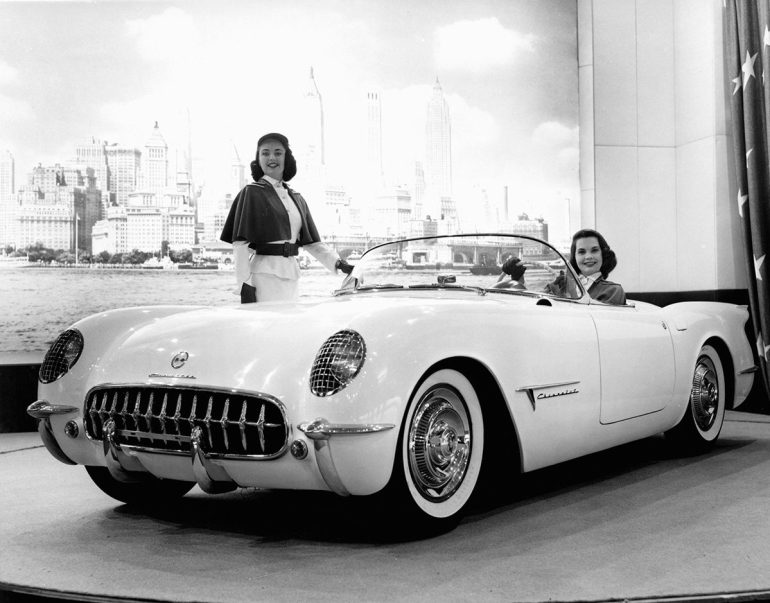 Corvette Debut Photo
Corvette Debut Photo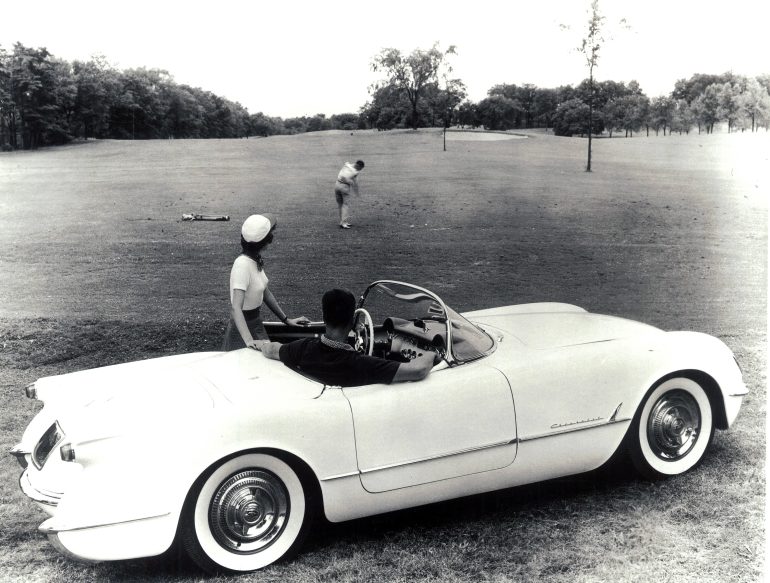 The first Corvettes made jaunty impressions on the road and at the country club.
The first Corvettes made jaunty impressions on the road and at the country club.
Is The C1 Corvette A Collector Car?
But what about the C1 Corvettes from a collectibility standpoint? Perhaps because of the limited numbers, and definitely because of the increasing rareness, the first-generation Corvettes (especially those in show quality condition) demand huge dollars in today's automotive marketplace. When crossing the auction block at events like Barrett-Jackson or Mecum auctions, it is not uncommon to see a first-generation Corvette sell for high-five and (often) low six-figure prices. The cars themselves are worth something because of their age and scarcity, but more than that, they are survivors from the "golden age" of the automotive industry - an era that most automotive enthusiasts agree will never be matched.
Would I trade a newer Corvette for a C1 strictly based on drivability? No. The newer Corvettes are a perfect fusion of handling, power and performance. However, would I trade a newer Corvette for a C1 based on aesthetics, collectibility and, well, just the "cool" factor?
Most definitely!! Why? Because the first-generation Corvette comes from an era in the history of the automobile industry where car's were built to be truly beautiful. The attention to the details - from all of the chrome attributes on each of those early cars - to the beautiful lines molded into the fiberglass bodies across the entire vehicle, there is little doubt in my mind that the first-generation Corvettes will continue to remain relevant even after some of the more modern era Corvettes are gone and forgotten.
Did You Know?
The original front emblem and horn button on the “Autorama” show circuit Corvette featured crossed American and checkered flags. It was later discovered that using an American flag on a product trade mark was against the law and the emblem was changed shortly before the New York Motorama.
Parts Bin Car?
Interestingly, there are rumors that circulate to this day that claim the C1 Corvette was developed as a "parts bin" car (meaning that it was cobbled together using existing hardware from other GM automobiles. While there are elements to this claim that are accurate (the early "Stovebolt Six" six-cylinder engine, for example, was a standard powerplant used in a number of cars during that era), the majority of the car - including its frame and suspension - were uniquely designed for the Corvette.
All first-generation Corvettes (from 1953 thru 1962) ride on a setup that was designed by Maurice Olley, GM's top suspension man during the early 1950's. Considered one of the best in the industry, Olley worked closely with Zora Arkus Duntov to develop a suspension platform that would make the Corvette a competitor on the racetrack. The design work that went into the frame, suspension and braking systems of the C1 Corvette transformed the car from a "wiggle wagon" (as Duntov had once described the original 1953 Corvette) to a track worthy competitor. Moreover, with the exception of some bolt-on parts and mounting points, the frame, suspension and brake platform remained nearly identical from the 1953 Corvette thru the 1962 model year.
It is also interesting to note that the Corvette body panels that were originally developed and fabricated for the 1953 Corvette by a fiberglass company in Ashtabula, Ohio were only manufactured thru 1955. When the Corvette was redesigned for the 1956 model year, the car shared virtually no body panels with the earlier model. Subsequently, with each revision to the Corvette, new panels were created and re-created, making the first-generation Corvette the only model in the brands history to see such complete and radical changes to its body design.
As stated earlier, the arrival of the second-generation Corvette Stingray in 1963 included a number of notable improvements over the first-generation models. It wasn't long before the C2 became recognized as a superior car to the C1. Subsequent generations of America's beloved sports car have certainly continued to carry that stigma forward. Today, as the next-generation model approaches, there are significant declines in the sales of the outgoing model. While it's never been documented, this "out with the old - in with the new" concept definitely seems to be an important part off the Corvette marketing strategy.
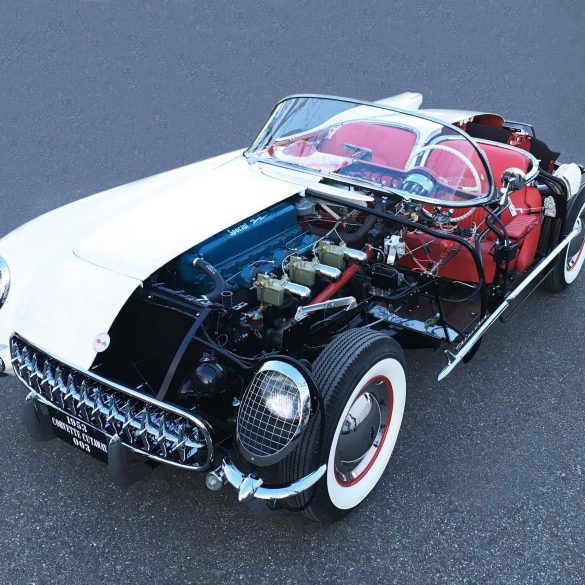 A cutaway view of the 1953 Corvette.
A cutaway view of the 1953 Corvette.The C1 Corvette Model Timeline
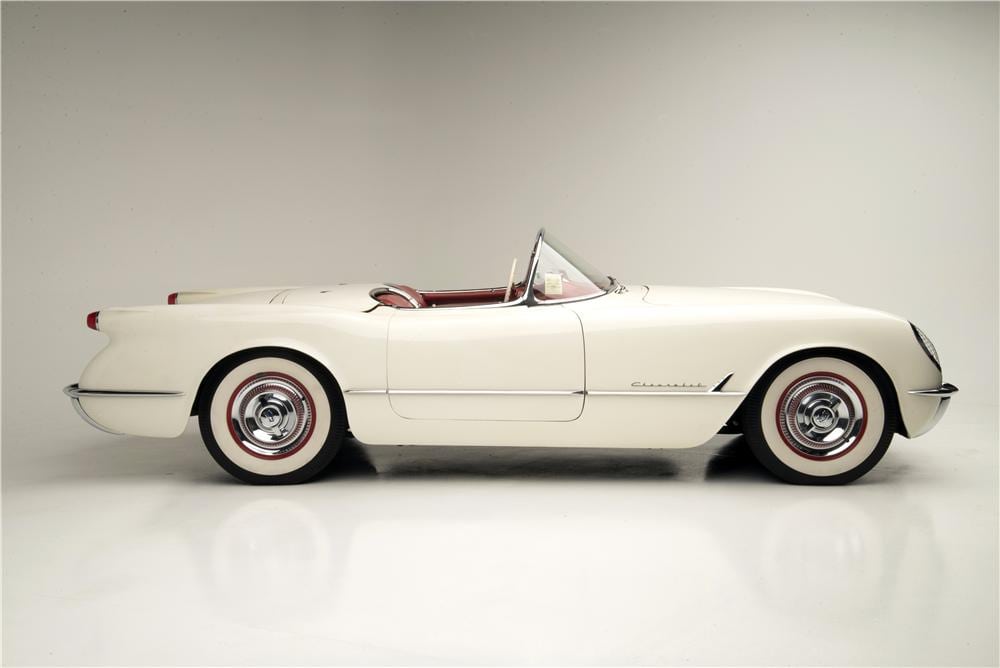 The 1953 Chevy Corvette.
The 1953 Chevy Corvette.1953 - 1955 Corvette
The first Corvette ever built was introduced in 1953. Developed by Harley Earl, the Corvette was introduced to compete with the two-seater sports cars that American soldiers were bringing home with them from Europe. The car was visually stunning for its time but its small "stovebolt" six-cylinder engine was under-powered and the car quickly gained a reputation as being an over-priced "rolling bathtub." From 1953-1955, the car sold a total of just 4,640 units, and the general consensus in those early days was that the Corvette was finished.
Fortunately for Corvette, a Belgian engineer by the name of Zora Arkus Duntov had taken notice of the car at the 1953 GM Motorama. He drafted a letter to the executives at Chevrolet describing those elements of the car that worked and making a number of recommendations to improve the car's power and performance capabilities.
After joining Chevrolet in 1954, Duntov became involved with the Corvette program. By 1955, working in cooperation with then Chevrolet Chief Engineer Ed Cole, the pair developed the all-new 265 cubic-inch small bock Chevy V-8 engine and paired it to a three-speed manual transmission. This new setup improved the performance of the 1955 Corvette considerably but the car's reputation significantly hindered sales. Worse still, Ford had introduced the 1955 Ford Thunderbird which was considered by most automotive enthusiasts of that era as a "more refined two-seater" automobile than the Corvette. Ford sold 16,155 Thunderbirds that year while Chevrolet managed to sell just 700 Corvettes.
While production of the Corvette was nearly stopped after Chevrolet's year-over-year failure to sell the little sports car, the Ford Thunderbird proved to be at least partially responsible for its survival. By late 1954, both GM management and the engineering/design staff behind the Corvette knew that the car needed an overhaul. While Harley Earl's original design had a pleasant appearance to consumers, it lacked the aggressive stance that many of its competitors shared.
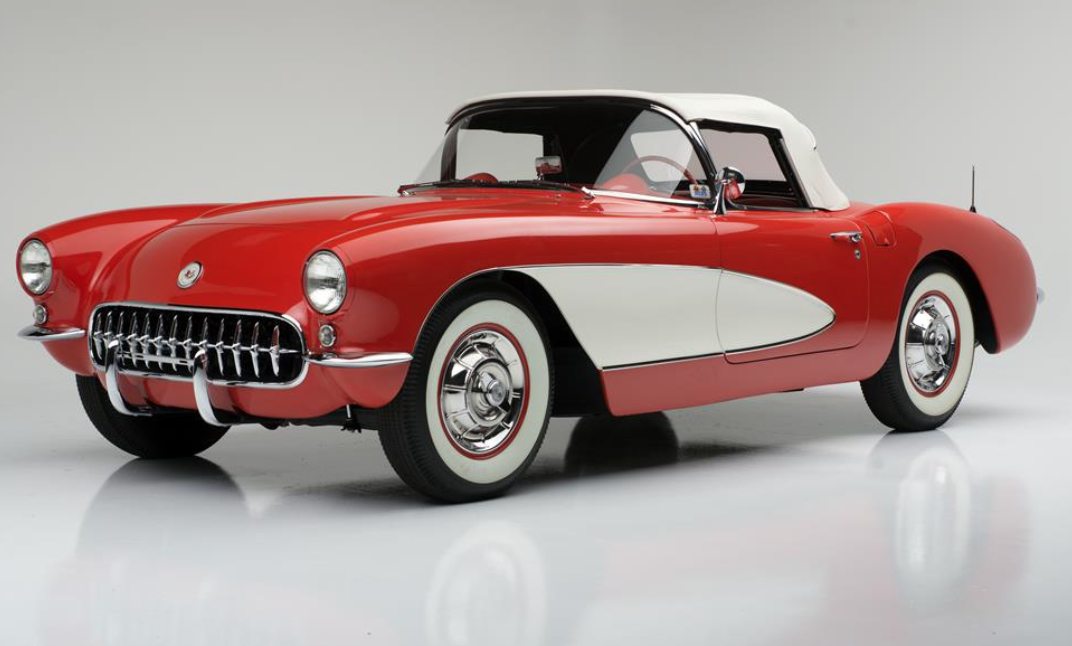 '56-57 Corvette are distinguishable from later model C1s thanks to single headlight on either side of the front end.
'56-57 Corvette are distinguishable from later model C1s thanks to single headlight on either side of the front end.1956 - 1957 Corvette
For 1956, the design team behind the Corvette introduced an entirely new body design that immediately captured the attention of the American public. The 1956 Corvette suddenly had the "wow" factor that the earlier version had been lacking, and sales increased from 700 units in 1955 to 3,467 units in 1956 and to 6,339 units in 1957. These numbers were still significantly less than the number of Thunderbirds sold each year by Ford, but it proved that the engineers at Chevrolet were on the right path.
Better still, Ford had decided to withdraw the Thunderbird from the two-seater market. It is commonly believed that the Corvette had performed so well in open competition throughout 1957 that it had forced Ford to “throw in the towel” on it’s two-seater Thunderbird. Chevrolet believed that the absence of the Thunderbird would help escalate sales of the upcoming 1958 models to numbers in excess of 10,000 units.
The 1957 model was also the first Corvette to offer multiple engine options to consumers. A 283-cubic inch engine replaced the 265-cubic inch engine which had been developed for the 1955 model. This modified engine delivered an impressive 220 horsepower when coupled with a four-barrel carburetor. Dual four-barrels took it to 245 horsepower (and 270bhp.) Better still, consumers could also purchase GM‘s newly developed “Ramjet” fuel injection system which yielded 259 horsepower (or 283 bhp).
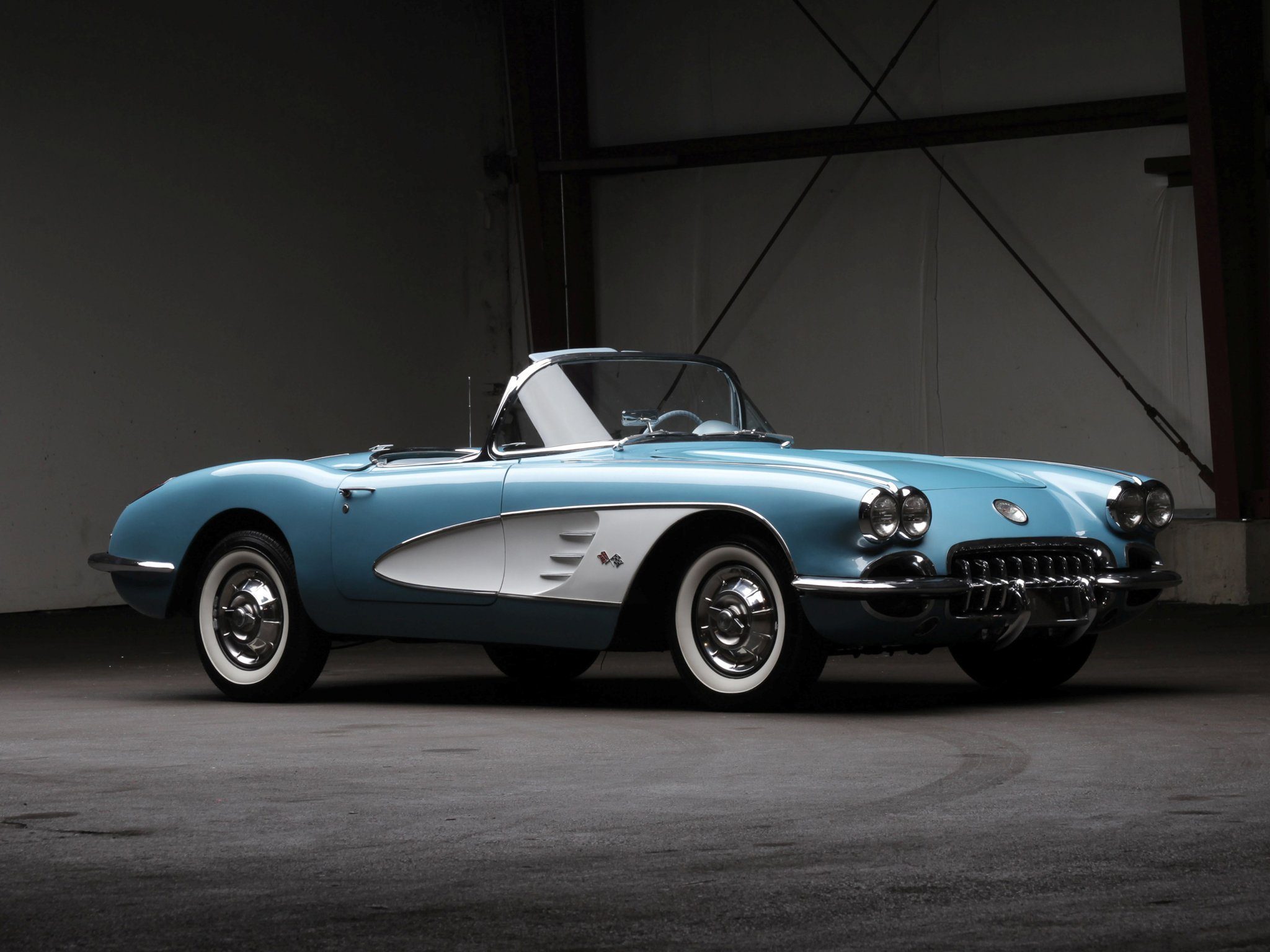 The 1958 Corvette was longer, had twin headlights, and was heavier than its predecessors.
The 1958 Corvette was longer, had twin headlights, and was heavier than its predecessors.1958 - 1960 Corvette
As well received as the 1956-1957 model had been, General Motors had created a mandate for its 1958 model lineup that stated all GM cars "must now include the new corporate four-headlight look."
So, for the 1958 model year, the Corvette was reworked again. The 1958 Corvette marked the end of Harley Earl's involvement with the program. As Earl had always been a fan of chrome, the 1958 Corvette received a number of chrome flourishes all over the car's exterior. Additionally, the car grew heavier by 200 lbs, longer by 9.2 inches and wider by 1.7 inches. Despite the increase in size and weight, and despite some questionable placements of chrome trim on the car's body (especially the "suspenders" on the rear-end,) sales of the 1958 Corvette showed considerable improvement from the previous model year, jumping up to 9,168 units in 1958.
With the exception of a reduction in chrome trim, the 1959-1960 models were virtually identical to the 1958 Corvette. However, the 1959 Corvette is still "celebrated" for being the last model year to sell less than ten-thousand units in a given model year. In fact, the 1959 Corvette came in just short of ten thousand units at 9,670 cars sold in 1959. The following year, the 1960 Corvette finally broke the 10,000 unit barrier by selling a total of 10,261 units.
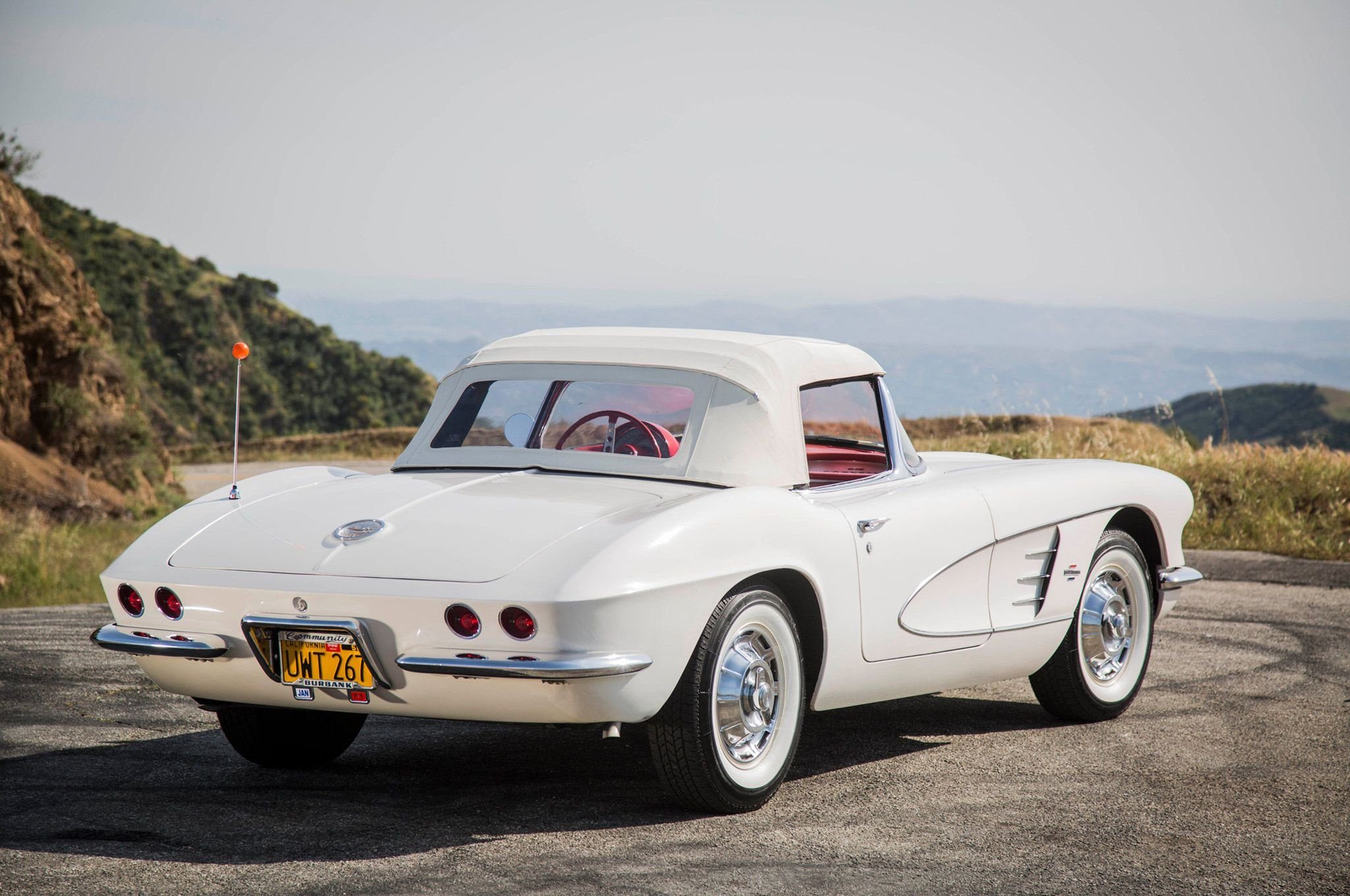 The 1961 Corvette had a completely redesigned back end that included a new "ducktail" design.
The 1961 Corvette had a completely redesigned back end that included a new "ducktail" design.1961 - 1962 Corvette
The final iteration of the first-generation Corvette arrived in 1961. It featured body-lines that were definitely a prelude to the second-generation Corvette Stingray, which was already in the design phase at that time. The car's front end was almost identical to the 1958-1960 Corvette except for the car's grille, which replaced the chrome "teeth" of the earlier models in favor of a mesh grille. The car's back end was a much different story.
Bill Mitchell, who replaced Harley Earl as General Motors Vice President of Styling (design), had been working on a number of upgrades to the first-generation Corvette based on the "Corvette Stingray" prototypes he'd been developing. As Corvette sales had continued to increase year over year, GM's executives decided to review some of Mitchell's designs. It wasn't long before they'd made the decision to green light another re-styling of the Corvette for the 1961 model year.
The back end received a distinctive "ducktail" design that had been virtually replicated from Mitchell's prototypes and XP-700 show car model. The rear-end redesign improved upon the car's practicality by increasing available luggage space by 20%. More significant than that (at least from the historical perspective of the Corvette brand) was that Mitchell introduced a pair of small, round taillights on each side of the license plate recess. These redesigned taillights would become synonymous with Corvette and would remain a standard feature on all future generations until the introduction of the 2014 Corvette Stingray. Both the 1961 and 1962 Corvette models were commercial successes, and the sales number proved it. The 1961 Corvette sold 10,939 units and the 1962 was the most successful of all the first-generation Corvettes, selling a total of 14,531 units that year.
The C1 Corvette Market - Sales & Auctions
C1 Corvettes for Sale. This is our C1 Corvette auction and sales area. We share upcoming auctions, recent auction results, cool C1 Corvettes we find for sale and commentary on the current market for C1 Corvettes.
C1 Corvette Videos, Pictures & Wallpapers
The C1 was a bit of stunner and these picture galleries show why. Below we have pictures of the C1 Corvette generation for you to enjoy. We have also included some great C1 corvette wallpapers that are totally free to download as well as videos of C1 Corvettes that we think you will enjoy.
The C1 Corvette Newsfeed
Awesome restorations, sacrilege restomods, cool C1 Corvettes at auction or for sale, this is your newsfeed for all things C1 Corvette.
C1 Corvette Technical Research
Production and sales numbers, order guides and sales brochures, we have more C1 Corvette research than you could ever want.
C1 Production
Ever wanted to know just how many C1 Corvettes were made? We have you covered.
C1 Order Guides
Looking to decode your C1 Corvette or find the order guide for reference. See them all below.


